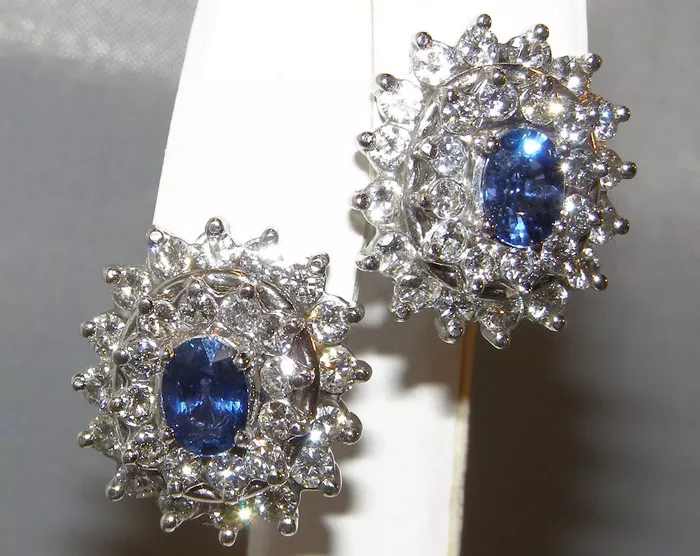Diamond studs, prized for their elegance and enduring allure, are a timeless addition to any jewelry collection. Whether given as a gift to mark a special occasion or purchased as a personal indulgence, these gems hold a unique place in the world of fashion and luxury. However, along with their beauty comes the responsibility of proper care and maintenance. One common question that arises among diamond stud wearers is whether it’s safe to wear diamond studs in the shower. To address this, it’s essential to delve into the properties of diamonds, the composition of stud earrings, and the factors that influence their durability and longevity.
Understanding Diamond Stud Earrings
Diamond studs typically consist of two main components: the diamond itself and the setting that holds it in place. The diamond, renowned for its exceptional hardness and brilliance, is formed under intense pressure and heat deep within the Earth’s mantle. This natural process results in a gemstone that ranks highest on the Mohs scale of mineral hardness, making it extremely resistant to scratching and abrasion.
The setting, on the other hand, can vary in material and design. Common settings include prong settings, bezel settings, and martini settings, each offering different levels of security and aesthetic appeal. Prong settings, for instance, use small metal claws to grip the diamond, allowing maximum light exposure for enhanced brilliance. Bezels, by contrast, encircle the diamond with a metal rim, providing a more secure fit and added protection against accidental knocks.
Factors Influencing Durability
Water Exposure and Cleaning
While diamonds themselves are impervious to water damage, the setting of diamond stud earrings can be more vulnerable. Water exposure over time may weaken the metal prongs or loosen the diamond from its setting, especially if the earrings are subjected to frequent temperature changes or harsh chemicals found in some soaps and shampoos. To minimize these risks, it is advisable to remove diamond studs before showering or engaging in activities that expose them to water or chemicals.
Temperature Fluctuations
Temperature changes, such as those experienced during showering, can also impact the durability of diamond studs. Metals expand and contract with temperature fluctuations, which may affect the tightness of prongs or the integrity of the setting over time. For this reason, avoiding prolonged exposure to extreme temperatures, including hot water from showers, can help preserve the condition of your diamond studs.
Chemical Exposure
Certain chemicals commonly found in personal care products, such as chlorine and sulfates, can potentially damage the metal components of diamond stud earrings. Chlorine, often present in swimming pools and hot tubs, can accelerate metal tarnishing and weaken prongs, increasing the risk of diamond loss. To safeguard against chemical damage, it is advisable to remove diamond studs before swimming or using products containing harsh chemicals.
See Also: Do Diamond Studs Go with Everything?
Care and Maintenance Tips
Regular Inspection
Regular inspection of diamond stud earrings is essential for identifying any signs of wear or damage. Check the integrity of the prongs and the security of the diamond in its setting to ensure a snug fit. Loose or damaged settings should be promptly addressed by a qualified jeweler to prevent further complications.
Cleaning Routine
Maintaining the cleanliness of diamond stud earrings is key to preserving their brilliance and appearance. Clean them regularly using a soft-bristled brush and a mild solution of warm water and dish soap. Gently scrub the earrings to remove dirt and debris, taking care to avoid vigorous scrubbing that could loosen the setting. Rinse thoroughly with clean water and pat dry using a soft cloth.
Storage Practices
Proper storage when not in use can help protect diamond studs from unnecessary wear and tear. Store them in a jewelry box or pouch designed specifically for earrings to prevent scratching and minimize exposure to air and moisture. Avoid storing diamond studs alongside other jewelry pieces that could potentially scratch or damage them.
When to Remove Diamond Stud Earrings
To maintain the longevity and luster of diamond stud earrings, it is advisable to remove them in the following situations:
Showering: To minimize exposure to water and potential chemical damage, remove diamond studs before showering or bathing.
Sleeping: Avoid wearing diamond studs while sleeping to prevent accidental damage or snagging.
Exercising: Remove diamond studs before engaging in physical activities or sports to prevent exposure to sweat and impact damage.
Cleaning: Take off diamond studs before using cleaning products or engaging in household chores to avoid exposure to chemicals.
Conclusion
Diamond stud earrings represent a timeless investment in beauty and craftsmanship. To ensure their lasting allure, it is crucial to understand their composition, vulnerabilities, and optimal care practices. While diamonds themselves are durable and resistant to scratches, the settings of diamond stud earrings can be susceptible to damage from water, chemicals, and temperature fluctuations. By adopting a proactive approach to care and maintenance, including regular inspection, gentle cleaning routines, and mindful storage practices, you can preserve the brilliance and integrity of your diamond studs for years to come. Remember, when in doubt, err on the side of caution by removing diamond studs before activities that may compromise their beauty and structural integrity.

